
Pork chops are pretty much the filet mignon of the white meat world, and we’re not afraid to say that we might just enjoy them as much as a top-shelf steak – and that’s saying a lot!
However, people aren’t cooking pork chops as much as they used to, and this is probably because they’re notoriously easy to mess up. Therefore, because we don’t think that you should settle for dry and tasteless chops, we have a compiled 7 foolproof steps that you should take before, during, and after cooking your chops.

You need to know exactly what you have purchased before you start cooking. There are actually 5 different kinds of pork chop – the boneless chop, the loin chop, the rib chop, the sirloin chop, and the shoulder chop. Traditionally, the center-cut loin is the most tender, so when in doubt, ask for this cut by name.
2. Pay Attention to Color and Thickness
Butchers will tell you that the thicker the pork cut chop, the better. It may require some extra cooking time, but the juicier meat is well worth the wait. To add to this, make sure to take a close look at the color of the pork – the best pieces will be marbleized and pink.
3. Opt for Brine
We all know a marinade makes pork taste great, but this won’t stop it from drying out when heated. For this reason, you should always brine your pork chops for at least 8 hours before cooking. Not only will this infuse moisture into the meat, but it will also give it a kick of earthy flavor.
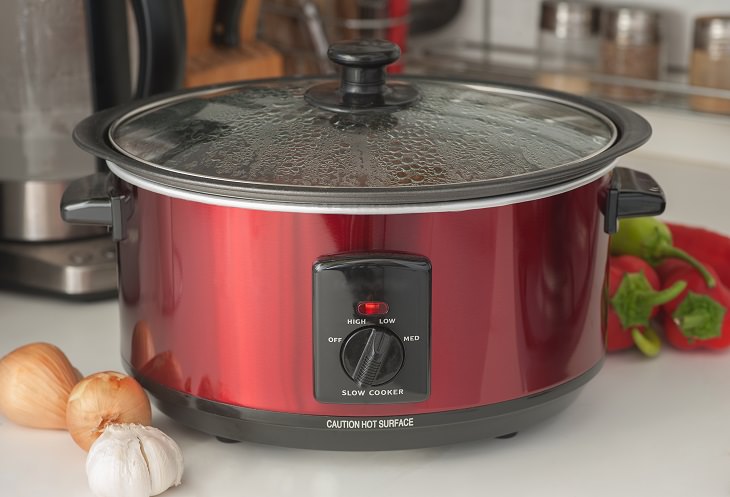
For delicious and succulent chops, roast them up in your slow cooker. This gadget works extremely well for pork because it provides consistent heat without scorching the meat.
5. Don’t be Afraid to Brown
If you don’t have a slow cooker, you can always brown the pork chops on the stove. While it’s a method that can go wrong if the pan gets too hot, we guarantee you’ll get mouth-watering results if you use butter while browning.
6. Know When to Take Them off the Heat
For safe consumption, pork needs to be cooked until it reaches a minimum of 145F, but that doesn’t mean that you need to keep it on the heat till it reaches that temperature. Instead, wait until the thermometer hits 135F, then take the meat off the heat and monitor until it reaches 145. This will ensure you pork is safe to eat and never dry and tough.
7. Give the Pork a Rest
Now it’s time to make sure all your hard work doesn’t go to waste. After taking the pork chops off the heat, wait about 10 minutes before serving – or else the juices will be lost along with the temperature.
Source: tiphero
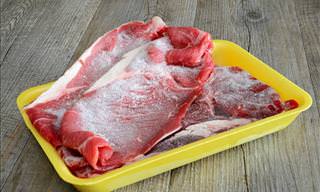
If You Defrost Your Meat Like This, Stop Right Now!
Here are eight common defrosting mistakes that you really need to stop making right now!

If You're Hungry at Night, You Should Eat These Foods!
If you are partial to a midnight snack, here are 7 foods that you should consider eating.

When Out Shopping, Avoid These 8 Generic Foods!
Generic foods are becoming more and more popular, but are they always a bargain? Here are 8 foods you should never buy generic.

Say Goodbye to Fat with These 6 Great Fat-Burning Foods
If you're looking to lose some weight, you should add these 6 fat-burning foods to your diet.
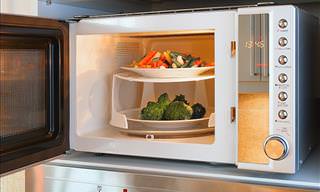
12 Foods We Bet You Didn't Know Could be Microwaved
Do you think that your microwave is only good for heating frozen dinners? If so, you’re sorely mistaken! Use the following microwave hacks to soften sugar, froth milk, whip up some French toast, and more!

Improve Your Health with These 11 Simple and Quick Hacks
To get healthy quick, all we need to do is follow these instant health upgrades. Take a look!
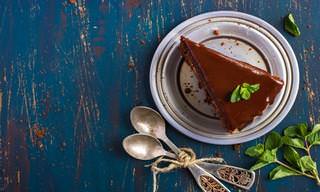
14 Finger Lickin’ Good Cake Recipes for Every Occasion
You can have your cake and eat it with these 14 effortless cake recipes for every taste and preference!

Liven Up Your Summer with These 4 Delicious Salad Recipes
The hot days of the summer are here and with it, the desire to eat light meals - try the following salad recipes to feel refreshed and healthy!

Make Much Better Eggs With These 10 Awesome Tips
You may think you're able to cook eggs well, but these tips will simply take your ability to a whole new level. Learn how to cook eggs right in this post.

Toasting Used to be Done With a Real Toast!
How much do you know about wines? Kick start the weekend with some facts and puns about the drink of history
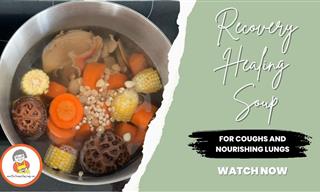 4:04
4:04
A Herbal Soup to Clear Congestion and Support Lung Health
This traditional Chinese soup offers natural comfort and relief.
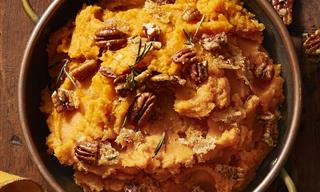
Delicious: Make Rosemary-Pecan Mashed Sweet Potatoes
This recipe delivers all the comfort of classic mashed potatoes with an elegant twist that sweet potato lovers will adore.
 7:34
7:34
Bring Variety to Your Morning With 10 Iced Coffee Drinks
Bring variety to your breakfast with these delicious and refreshing iced coffee drinks!
 0:44
0:44
How to Quickly Cook Pasta in a Pan
Ever cook pasta in a pan? It may sound counter-intuitive, but the resulting deliciousness is hard to dispute. You're gonna love it!
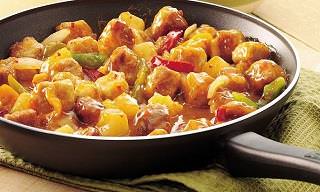
Delicious Sweet and Sour Pork That'll Melt in Your Mouth
This recipe will show you how to make a delicious sweet and sour pork that will leave your taste buds tingling.

This Exquisite Risotto is a Seafood Lover's Dream
This recipe will show you how to make a delicious and hearty seafood risotto.
 6:48
6:48
11 Common Cookie Baking Mistakes And Their Results
Every baker knows there is a delicate balance to be kept in chocolate chip cookies. This is how the 11 most common mistakes will affect your final batch.

This Delicious Bread Has No Carbs, No Gluten and No Sugar
Known as cloud bread, this carb and gluten free bread is soft, airy and fluffy, and so delicious, it practically melts in your mouth. All you need are three ingredients to make it - let's take a look.

Want to Be a Wine Expert? We've Got You Covered
If you find the world of wine a little bit too tricky at times, then worry no more, since below you'll find a full guide to buying the perfect wine for you.
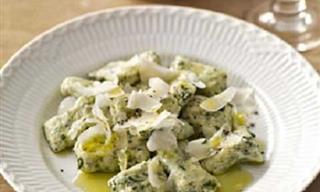
2 Authentic and Hearty Italian Recipes You've Got To Try
These are our favorite ways to prepare, savor and enjoy the best of Italian food.

Improve Your Dessert Time With These 4 British Classics!
American pie sure is delicious, but when it comes to baking incredibly tasty desserts, the Brits come well out on top. Here are 4 delicious British desserts.
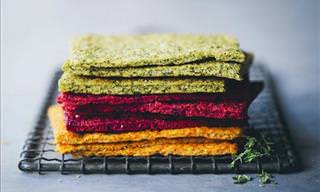
You Won't Believe What This Healthy Bread is Made of...
Wow, have you tried these new veggie flatbread recipes?! They are healthy, tasty, gorgeous and easy. Those are a few of my favorite things.
 8:57
8:57
Three Delicious and Clever Ways to Use Bacon in Cooking
Don't eggs and bacon hash browns sound like the perfect weekend breakfast? Learn to make this and two other bacon recipes from a renowned chef...
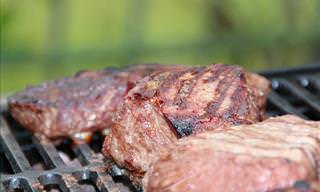
A 100% Proof Method to Know if Your Steak is Done ...
Steak can be prepared in many ways, depending on your liking but this method will determine when your steak is truly done!
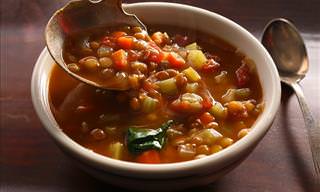
This Lentil Soup Really Is One of the Heartiest Around!
This recipe will show you how to make some hearty lentil soup.
 7:24
7:24
Grilled Cheese: The Deluxe, Most Delicious Edition!
This tutorial is about to teach you how to take your grilled cheese to a whole new level.

Delicious and Easy-To-Make Chocolate Recipes
We've got the best recipes for you to make everyone happy by sharing the chocolate around in gorgeous dishes that will make sure you never have to eat it alone.

You'll Think Twice About Foods You Buy After Reading This
Did you know that these things go on in the food industry? We bet you'll be surprised. Here are 10 rather revolting food practices you should know about.

6 Delicious and Special Soup Recipes That’ll Warm Your Body
The cold winter days that stimulate the senses are perfect for trying these 6 simple, delicious, soul-warming soup recipes.

Consuming Too Much of These Healthy Foods Can Be Deadly
While they may appear to be healthy on the surface, you may be surprised to discover just how fatal these 6 foods can be.
 15:58
15:58
White Bread - 6 Delicious Food Ideas on a Budget
All you have left in the kitchen is some white bread? Learn how to easily prepare 6 budget-friendly foods using white bread as the base...

31 Quick and Easy Snacks That Have Less Than 100 Calories Each!
The following tasty and simple-to-make healthy snacks are just what you need to treat your cravings without ever tipping the 100 calorie line.
 3:03
3:03
Here Are the Very Best Ways to Cook Sweet Potatoes
There are numerous different ways of cooking sweet potatoes, but which is the most nutritious? Find out in this informative video.
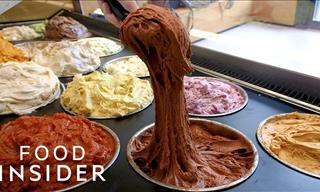 8:18
8:18
The Ultimate List of Extravagant Desserts You Must Try
Here are some truly unbelievable and outrageous desserts from around the world that you simply must add to your bucket list.
 3:34
3:34
Start the Day Differently With These Delicious Spicy Eggs
Tired of the same old scrambled eggs every morning? Try Gordon Ramsay's delicious recipe for spicy Mexican eggs.

Add These Tasty Protein Shakes to Your Daily Routine!
Here are 27 delicious and nutritious protein shake recipes that you can add to your daily routine.
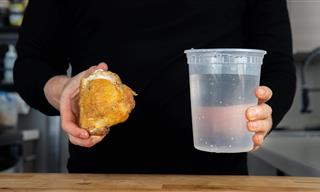 12:27
12:27
This Is the BEST Way to Cook Chicken
If the chicken you prepare always turns out dry and stringy, we have one question - have you ever tried poaching chicken? Here's how it's done + 2 recipes!
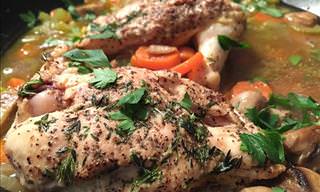
TEN Tasty Alternatives to Salt for Your Cooking Inspiration
Reduce your salt consumption by learning about the alternative ways to add flavor to your food, in the most sensational ways possible.

Create This Chocolate Peanut Butter Dessert Without Baking
Create a mouthwatering chocolate peanut butter desert without any baking. This easy-to-follow recipe will melt in your mouth with its delicious flavors.
 10:06
10:06
22 Mistakes We've All Been Making While Eating
We all love food, but that doesn't mean we are experts. Actually we are making basic eating errors every day. No fear, here are 22 fixes to learn!

This Is How Long You Can Freeze These Foods For!
We all know that freezing food prevents it from rotting. Here's a complete guide to how long you can let different foods stay frozen until they go bad!
 12:04
12:04
The Delightful Russian Breakfast You Never Knew About
Learn how to make Syrniki, a delicious Russian breakfast of cheese pancakes.

This Tasty Soup Will Become One of Your Favorite Dishes!
This Tuscan white bean & kale soup is healthy as well as hearty. Here's how you can make it.
 10:41
10:41
Let Gordon Ramsay Show You How to Buy and Prepare Fish
Kick back and relax, and let Gordon Ramsay explain to you how to choose and buy the best fish!

A Twist on Traditional Meals: 8 Delicious Savory Muffins
For a fun and new way to serve up some hearty and delicious grub, try turn a traditional recipe into a muffin! From breakfast ideas, to pasta, main courses and appetizers, here are 8 fantastic savory muffin ideas you can serve.
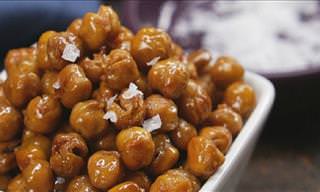
These Snacks Are Both Delicious and Healthy! Try Them Out!
People associate snacking with being unhealthy, but the following 6 snacks taste great and are also good for you.
 1:32
1:32
Quick Tip: Cook Fish Without Risk of Burning!
Learn to easily eliminate the biggest problem you're faced with when cooking fish.
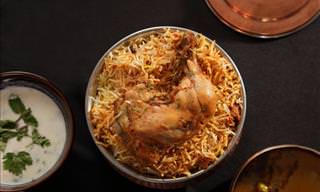
These 3 Recipes Prove Why Chicken Is the Most Popular Meat
Three appetizing chicken recipes from different cuisines: creamy Hungarian paprikash, aromatic Indian biryani and gourmet cordon bleu.
To enable your Ad-Free Subscription, please fill the fields below
Your subscription was successful, now you can enjoy an ad-free experience!! Note: To make sure you get no ads, please make sure to log in to your account. If you are logged in already, then refresh the page. The subscription can be cancelled at any time.


